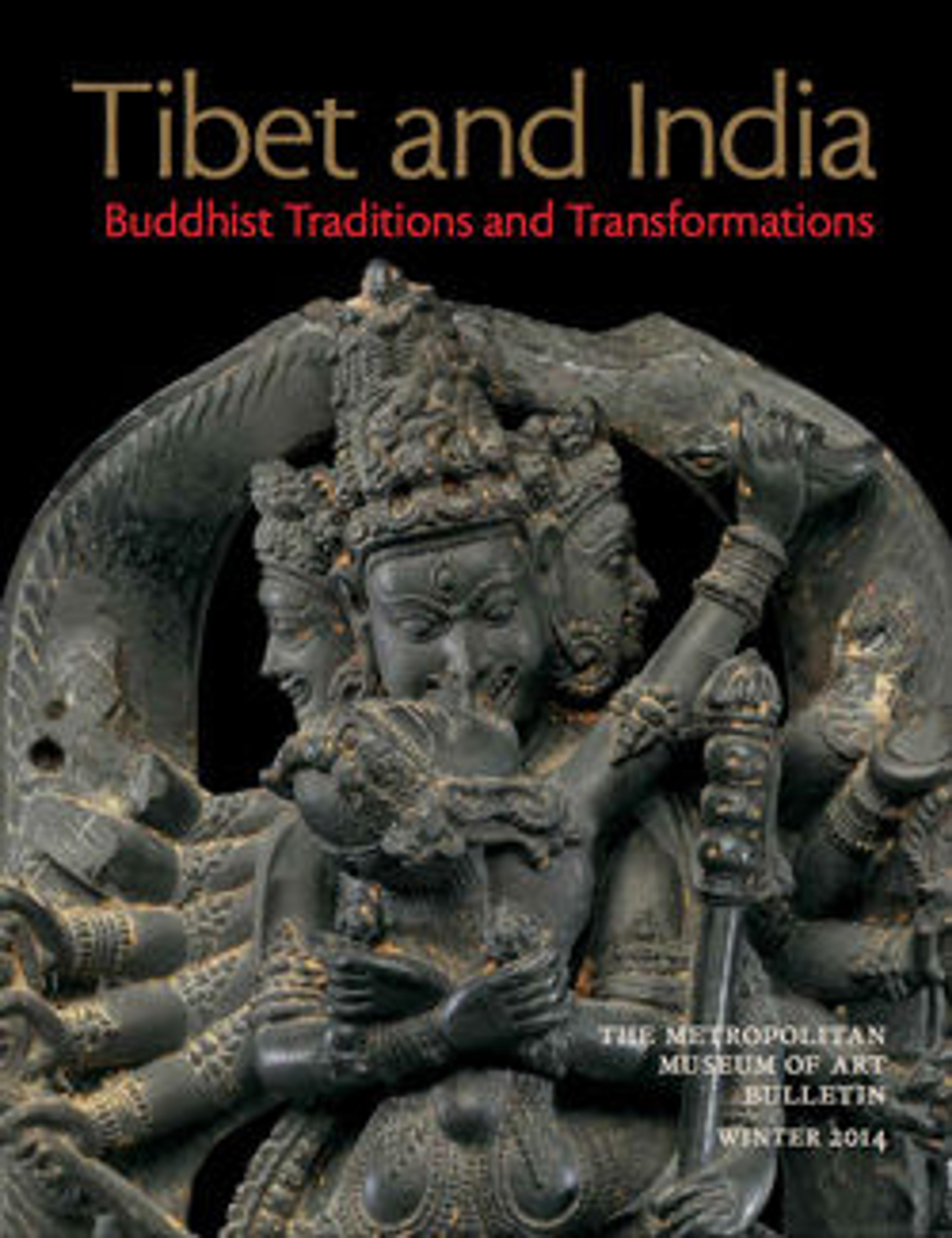Shiva as Mrityunjaya, the Conquerer of Death
This is an extremely rare representation of Shiva as Mrityunjaya, the destroyer of death and disease. He is shown deep in meditation in yogic form, as indicated by his interlocked legs and resting hands. The Uttarakamika, a ritual and iconographic text (agama), dictates that he should be represented in a tranquil state with three eyes, six arms, and matted dreadlocks (jatamukuta) adorned with the crescent moon. He displays a rosary and a water vessel, and his two missing hands would have held his trident (trisula) and a skull bowl (kapala), completing the ritually required iconography. A chain garland hangs below his legs (the text speaks of a garland of skulls). He is flanked by female attendants bearing fly-whisks and the hybrid bird-humans kinnara and kinnari, who provide music about his head. Celestial garland bearers hover above. His throne is a lotus pedestal with a makara-finial throne back. His devotee the bull kneels at lower left; the donor figure, at lower right.
Artwork Details
- Title:Shiva as Mrityunjaya, the Conquerer of Death
- Period:Pala period
- Date:12th century
- Culture:Bangladesh or India (Bengal)
- Medium:Black stone
- Dimensions:H. 38 in. (96.5 cm); W. 20 in. (50.8 cm); D. 7 1/2 in. (19.1 cm)
- Classification:Sculpture
- Credit Line:Gift of Florence and Herbert Irving, in memory of Alice Boney, 1991
- Object Number:1991.421
- Curatorial Department: Asian Art
More Artwork
Research Resources
The Met provides unparalleled resources for research and welcomes an international community of students and scholars. The Met's Open Access API is where creators and researchers can connect to the The Met collection. Open Access data and public domain images are available for unrestricted commercial and noncommercial use without permission or fee.
To request images under copyright and other restrictions, please use this Image Request form.
Feedback
We continue to research and examine historical and cultural context for objects in The Met collection. If you have comments or questions about this object record, please contact us using the form below. The Museum looks forward to receiving your comments.
